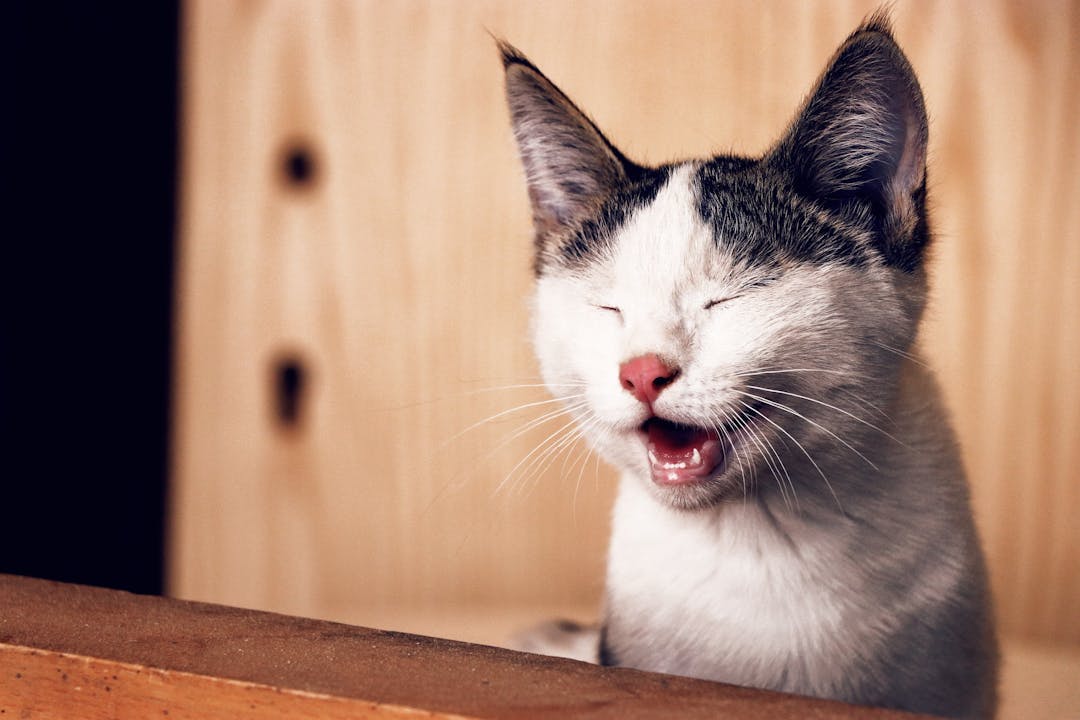Have you ever seen cats meow to each other? It doesn’t happen often. Kittens meow back and forth with their mothers, so when a kitten goes to a new home, they use the same learned behavior and vocalizations with their human family. As humans respond, cats meow to continue the conversation. Cats meow mainly to communicate with us. We’re here to break down the humble meow and help you better understand what your cat is trying to tell you.
Why Cats Meow
Cats are known for being independent, but sometimes they need our help. Here are three reasons why cats meow:
- Wants/needs — A meow usually means that your cat wants or needs something—it could be attention, food, or even access to a room.
- Greeting — Sometimes your cat is just saying, “Welcome home!”
- Discomfort — A meow can also mean that your cat is in distress and might even be lonely or sick. A longer “meowww” can indicate that your cat is worried, annoyed, or objects to something. Rapid meowing could mean that your cat is ill or injured; if you suspect that something serious is going on, contact a vet as soon as possible.
No matter which type of meow your cat makes, it’s important to listen carefully. Your cat’s vocalizations indicate their emotional state of mind.
Cat Talk Decoded
Other than birds, cats have the widest range of vocalizations of any domestic pet. Though meow is the most commonly heard cat sound, here are a few other sounds and what they mean:
Purr — Purring is that deep, throaty rumble your cat makes when they’re at their most content. Cats often purr during gentle petting, resting, and cuddling. Cats can sometimes purr when they’re concerned or agitated too. If your cat’s ears are back and their body feels tense, your cat might be worried about something.
Chirps, Trills, and Chirrups —Your cat learned these adorable birdlike vocalizations during kittenhood and use them to quickly get your attention. They might also just want you to know that they’re happy or excited.
Chatter — If your cat’s teeth are chattering, it doesn’t mean it’s cold. Cats often chatter over excitement at seeing a bird or a rodent and frustration about being stuck indoors and unable to act on their predatory instincts.
Hiss — A hiss is a release of air from your cat’s mouth. Cats hiss when they feel threatened and are ready to fight. Hissing is often accompanied by snarls and growls and a change in body language too—arched back, puffed hair, flattened ears, and exposed fangs.
Yowl — A yowl is a long, drawn-out moan that reveals discomfort, worry, or territorial concern. From one cat to another, a yowl can indicate a desire to mate or a warning to stay away. If your cat yowls regularly, contact a veterinarian.
Caterwaul — These vocalizations come from females that are in heat and males are calling out for potential mates. Caterwauls sound like the combination of a howl, a yowl, and a whine. If you notice your cat caterwauling, contact your vet to discuss having your cat spayed —unless you want kittens.
Breed Talk
Some people believe that cats tend to meow more when they have talkative owners, but a cat might be more or less chatty because of its breed. Generally, short-haired cats and those of Asian origin tend to be more talkative and outgoing than long-haired ones. If you prefer a quieter kitty, consider one of these cat breeds:
- Persian
- Chartreux
- Russian Blue
- Maine Coon
- Norwegian Forest Cat
These characteristics are not guaranteed, but it’s worth a shot if you have a preference.
The more you understand why cats meow and make other sounds, the easier it will be to care for them. You now have the tools to train yourself to listen to your cat’s vocalizations as a cat parent.
You can determine if you need to call a vet because your cat keeps yowling or just enjoy your cat’s gentle purrs on a lazy Sunday afternoon. Believe it or not, cats can even refine their vocalizations when they figure out what works best, so don’t be afraid to engage in deeper conversations with your kitty.





